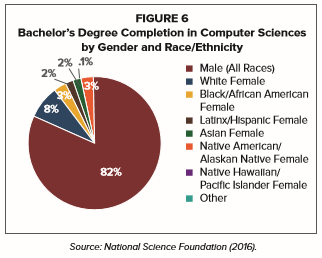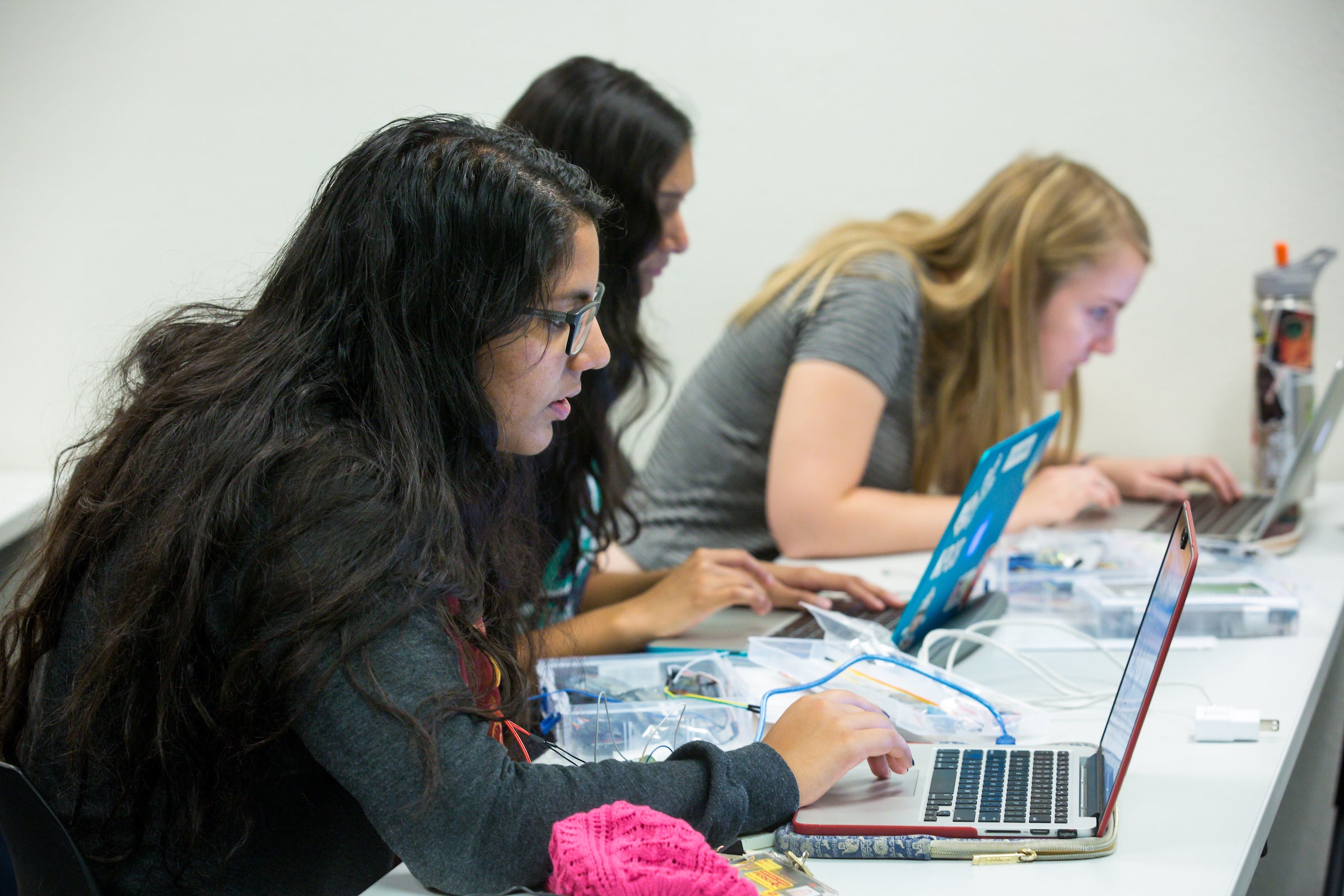The double meaning of the title of the movie “Hidden Figures” remains a go-to for what was, is and could be for women and girls in science.
As told in the 2016 film, the road to racial and gender equity in science, technology, engineering and mathematics has not been easy or fast — especially for women of color.
And while the story of NASA's human computers and the team of African-American women who calculated astronaut John Glenn’s historic Earth orbit is finally getting long overdue recognition, advocates say there is still plenty of work to do to ensure women of color have the opportunity to succeed in computing and STEM fields.
The Center for Gender Equity in Science and Technology (CGEST) at Arizona State University is all too aware of the still-hidden figures in computing careers and, in a new collaboration with the Kapor Center, is taking steps forward in acknowledging, understanding and untangling what is known as the “double-bindWithin science, technology, engineering and math fields, the unique situation of experiencing the combined and cumulative challenges of racism and sexism has been described as the "double-bind."” for women of color in STEM fields.
CGEST and the Kapor Center have released a new data brief that puts a glaring spotlight on the trends in participation of women of color across the computing ecosystem, from early to postsecondary education, in the workforce and as entrepreneurs and venture capitalists.
The brief, “Women and Girls of Color in Computing,” informs that while women of color are a rapidly growing and significant population in the U.S., they remain vastly underrepresented across the technology pipeline.
The brief highlights concerning facts that are prompting more research:
• Less than 7 percent of students taking Advanced Placement computer science in the U.S. are girls of color.
• Women of color make up less than 10 percent of those earning bachelor’s degrees in computing and less than 5 percent of those earning doctoral degrees in computing.
• Less than 2 percent of the Silicon Valley tech workforce are black, Latinx or Native American/Alaska Native women, and less than 1 percent of leadership in Silicon Valley’s tech companies are black, Latinx, or Native American women.
• Black women represent only 4 percent of all female-led startups and only 1 percent of all venture capitalists.
“This brief represents the most recent summary of data specific to women of color in computing,” said Kimberly Scott, executive director of CGEST and professor of women and gender studies in ASU’s School of Social Transformation.
“This data brief is also the first part of a larger effort which aims to build the body of literature on barriers and strategies to increase the number of women of color pursuing computing degrees and participating in the tech workforce, entrepreneurship and venture capital.”
Akhila Murella, left, Anisha Gupta and Michaela Foote, right, work on their coding in a special topics class at ASU on Nov. 23, 2016.
With technology declared a significant driver of economic growth across the globe and computing occupations cited among the fastest growing, a robust, skilled and diverse national workforce is essential to ensure the future of economic growth and prosperity in the U.S, according to the data brief. And women of color must be intentionally included as part of that equation.
“Through this data brief and our new research collaborative on women of color in computing, we hope to call attention to the importance of understanding intersectionality and the unique experiences of women of color,” said Allison Scott, chief research officer at the Kapor Center. “At the same time we want to develop and share strategies to increase the participation and success of women of color across the computing pipeline.”
The data brief is the first provision from the Women of Color in Computing Researcher/Practitioner Collaborative, which aims to develop foundational landscape data on the participation of women of color across computing. The collaborative, whose membership is composed of academic researchers, will continue to work to identify obstacles and barriers unique to women of color in computing to improve outcomes and representation in the field.
"Math is always dependable" — A scene from the 2016 movie "Hidden Figures"
Top photo from Pixabay
More Science and technology

Indigenous geneticists build unprecedented research community at ASU
When Krystal Tsosie (Diné) was an undergraduate at Arizona State University, there were no Indigenous faculty she could look to in any science department. In 2022, after getting her PhD in genomics…

Pioneering professor of cultural evolution pens essays for leading academic journals
When Robert Boyd wrote his 1985 book “Culture and the Evolutionary Process,” cultural evolution was not considered a true scientific topic. But over the past half-century, human culture and cultural…

Lucy's lasting legacy: Donald Johanson reflects on the discovery of a lifetime
Fifty years ago, in the dusty hills of Hadar, Ethiopia, a young paleoanthropologist, Donald Johanson, discovered what would become one of the most famous fossil skeletons of our lifetime — the 3.2…


